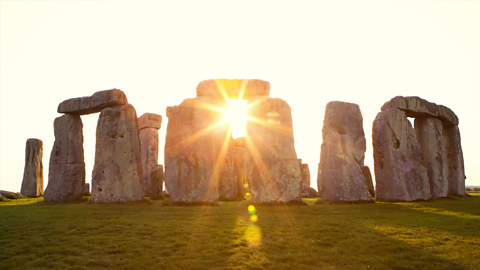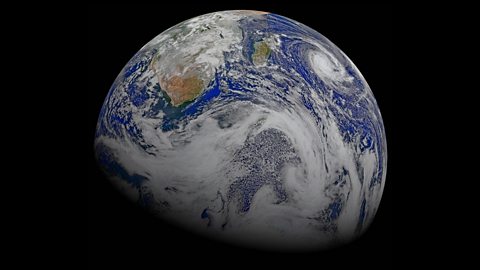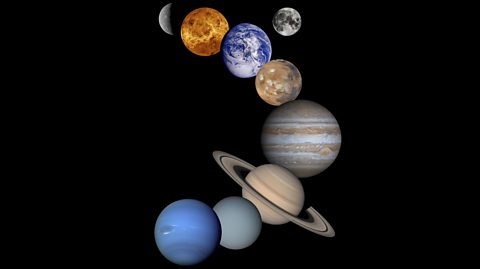From the colours of spring to the cosiness of winter, each season has its own charms.
Right now, the days are long and it’s warmer, but when is summer supposed to (officially) start?
Well, it depends. There are two ways to measure seasons in the UK - it’s meteorologists vs astronomers.

What is the difference between meteorological and astronomical seasons?
Astronomical seasons are based on the position of the Earth in relation to the Sun, whereas the meteorological seasons are based on the annual temperature cycle.
What are astronomical seasons?
Tom Kerss and Emily Drabek-Maunder, from The Royal Observatory, Greenwich, explain what an astronomical season is all about.
“In astronomy, the June Solstice (which is defined by a point in the Earth’s orbit around the Sun) signifies the beginning of summer in the Northern Hemisphere (and the beginning of winter in the Southern Hemisphere). Astronomical seasons are precisely defined.”
The Earth's axis is tilted as it travels around the Sun, so some parts of the Earth receive more sunlight each day than others. As the Earth moves round the Sun, the hours of daylight change, and this is how we get seasons.
Here's an explanation of the astronomical seasons from the experts:
“The Earth has a tilt, meaning its North and South poles aren’t perfectly lined up with the Sun. This tilt is about 23.4 degrees. The only reason why the Earth has seasons – spring, summer, autumn and winter – is because of the tilt of the Earth.”
“When all of us in the Northern Hemisphere are tilted towards the Sun, there are more hours of daylight, which happens in summer. When we are tilted away from the Sun, there are fewer hours of daylight and longer hours of night, which is winter.”
“In astronomy, summer starts with the Summer Solstice and lasts until the Autumn Equinox (or when the hours of daylight and night are equal)," which in 2024 will happen on 22 September.
It's the tilt of the Earth in relation to the Sun that defines when the solstice falls.

So, astronomically, summer starts at the June Solstice, which in 2024 is on 20 June.
Meteorological seasons explained
Because the Earth actually takes 365.24 days to travel around the Sun we add an extra day every fourth year, we call this a Leap Year. This means the longest and shortest days vary from one year to the next.
The elliptical shape of the Earth’s orbit causes the lengths of the astronomical seasons to change and this mean it is difficult to compare climatological statistics consistently for a particular season.
This is where the meteorological seasons come in.
Meteorological dates mark the start and end of seasons for statistical purposes. Meteorologists split the year into four quarters, each made up of three months, based on the annual temperature cycle.
The length of the meteorological seasons are more consistent than the astronomical ones, so that we can observe, forecast and compare season statistics reliably from year to year.
- Autumn: September 1 - November 30
- Winter: December 1 - February 28
- Spring: March 1 - May 31
- Summer: June 1 - August 30
This means that, for meteorologists, it’s been summer since the beginning of June.

What is the summer solstice?
The June solstice is often referred to as the first day of summer, and yet celebrations across the Northern Hemisphere at this time of year carry the name Midsummer, which is pretty confusing.
Midsummer and the summer solstice are used interchangeably, but they refer to different things.
The solstice is the beginning of the astronomical summer that has been celebrated since ancient times as the longest day of the year, whereas Midsummer now refers to numerous celebrations that are held over the solstice period, between June 19 and June 24, with both Pagan and Christian origins.
“Midsummer, as in the religious observances traditional in many countries, occurs close to the June or Summer Solstice” explain Tom and Emily.
With celebrations originating in ancient times as a festival for the summer solstice, this could be where the name comes from. Bonfires were lit up to ward off evil spirits as the sun turned southward.
If you only had the Sun to measure time and dictate your hours of light, the longest day would feel like a mid point before you make the descent back into winter.
So, there you have it.
Meteorologically, we’re nearly a month into summer. Astronomically, the summer has only just begun.
But, of course, it won’t really feel like summer in Britain until we start complaining it’s too hot.
This article was published in June 2019 and was last updated in June 2024

The super-hard Solar System quiz
Blast off into a learning journey with this mind-bending quiz.

What are the seasons?
Learn all about the seasons in this Bitesize - KS1 guide.

Ten things you didn't know about our Solar System
You'll be a star student once you've read this!
